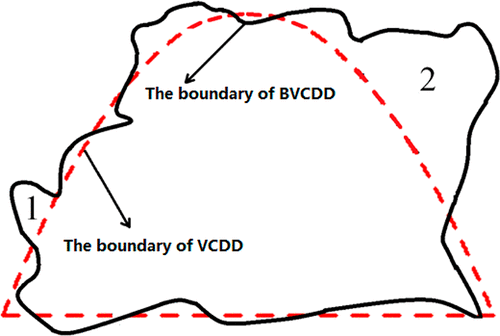当前位置:
X-MOL 学术
›
Ind. Eng. Chem. Res.
›
论文详情
Our official English website, www.x-mol.net, welcomes your feedback! (Note: you will need to create a separate account there.)
Improved Vine Copula-Based Dependence Description for Multivariate Process Monitoring Based on Ensemble Learning
Industrial & Engineering Chemistry Research ( IF 4.2 ) Pub Date : 2019-02-21 , DOI: 10.1021/acs.iecr.8b04081 Yang Zhou 1 , Shaojun Li 1 , Ning Xiong 2
Industrial & Engineering Chemistry Research ( IF 4.2 ) Pub Date : 2019-02-21 , DOI: 10.1021/acs.iecr.8b04081 Yang Zhou 1 , Shaojun Li 1 , Ning Xiong 2
Affiliation

|
This paper proposes a boosting vine copula-based dependence description (BVCDD) method for multivariate and multimode process monitoring. The BVCDD aims to improve the standard vine copula-based dependence description (VCDD) method by establishing an ensemble of submodels from sample directions based on a boosting strategy. The generalized Bayesian inference-based probability (GBIP) index is introduced to assess the degrees of a VCDD model (submodel) to depict different samples, which means how likely an observation is under the probabilistic model for the system. Every sample is weighted individually according to the depiction degree. The weights are then used to choose a certain number of samples for each succeeding submodel. In this way, the samples with large error in the preceding model can be selected for training the next submodel. Moreover, the number of submodels as well as the number of training samples chosen for every submodel are determined adaptively in the ensemble learning process. The proposed BVCDD method can not only solve weak sample problems but also remove redundant information in samples. To examine the performance, empirical evaluations have been conducted to compare the BVCDD method with some other state-of-the-art methods in a numerical example, the Tennessee Eastman (TE) process, and an acetic acid dehydration process. The results show that the developed BVCDD models are superior to those obtained by the counterparts on weak samples in both accuracy and stability.
中文翻译:

基于集成学习的改进的基于Vine Copula的多过程监控依赖描述
提出了一种基于藤蔓copula的依赖描述(BVCDD)方法,用于多变量和多模式过程监控。BVCDD旨在通过基于增强策略从样本方向建立子模型的集合来改进标准的基于藤蔓系的依赖描述(VCDD)方法。引入了通用的基于贝叶斯推理的概率(GBIP)索引来评估VCDD模型(子模型)的程度,以描述不同的样本,这意味着在系统的概率模型下观察的可能性。每个样本都根据描述程度分别加权。然后使用权重为每个后续子模型选择一定数量的样本。这样,可以选择先前模型中误差较大的样本来训练下一个子模型。而且,在整体学习过程中,自适应地确定子模型的数量以及为每个子模型选择的训练样本的数量。所提出的BVCDD方法不仅可以解决弱样本问题,而且可以消除样本中的多余信息。为了检查性能,已进行了经验评估,以将BVCDD方法与其他一些最新方法(在一个数值示例中,田纳西伊士曼(TE)工艺和乙酸脱水工艺)进行比较。结果表明,所开发的BVCDD模型在准确性和稳定性上均优于同行在弱样本上获得的模型。所提出的BVCDD方法不仅可以解决弱样本问题,而且可以消除样本中的多余信息。为了检查性能,已进行了经验评估,以将BVCDD方法与其他一些最新方法(在一个数值示例中,田纳西伊士曼(TE)工艺和乙酸脱水工艺)进行比较。结果表明,所开发的BVCDD模型在准确性和稳定性上均优于同行在弱样本上获得的模型。所提出的BVCDD方法不仅可以解决弱样本问题,而且可以消除样本中的多余信息。为了检查性能,已进行了经验评估,以将BVCDD方法与其他一些最新方法(在一个数值示例中,田纳西伊士曼(TE)工艺和乙酸脱水工艺)进行比较。结果表明,所开发的BVCDD模型在准确性和稳定性上均优于同行在弱样本上获得的模型。
更新日期:2019-02-22
中文翻译:

基于集成学习的改进的基于Vine Copula的多过程监控依赖描述
提出了一种基于藤蔓copula的依赖描述(BVCDD)方法,用于多变量和多模式过程监控。BVCDD旨在通过基于增强策略从样本方向建立子模型的集合来改进标准的基于藤蔓系的依赖描述(VCDD)方法。引入了通用的基于贝叶斯推理的概率(GBIP)索引来评估VCDD模型(子模型)的程度,以描述不同的样本,这意味着在系统的概率模型下观察的可能性。每个样本都根据描述程度分别加权。然后使用权重为每个后续子模型选择一定数量的样本。这样,可以选择先前模型中误差较大的样本来训练下一个子模型。而且,在整体学习过程中,自适应地确定子模型的数量以及为每个子模型选择的训练样本的数量。所提出的BVCDD方法不仅可以解决弱样本问题,而且可以消除样本中的多余信息。为了检查性能,已进行了经验评估,以将BVCDD方法与其他一些最新方法(在一个数值示例中,田纳西伊士曼(TE)工艺和乙酸脱水工艺)进行比较。结果表明,所开发的BVCDD模型在准确性和稳定性上均优于同行在弱样本上获得的模型。所提出的BVCDD方法不仅可以解决弱样本问题,而且可以消除样本中的多余信息。为了检查性能,已进行了经验评估,以将BVCDD方法与其他一些最新方法(在一个数值示例中,田纳西伊士曼(TE)工艺和乙酸脱水工艺)进行比较。结果表明,所开发的BVCDD模型在准确性和稳定性上均优于同行在弱样本上获得的模型。所提出的BVCDD方法不仅可以解决弱样本问题,而且可以消除样本中的多余信息。为了检查性能,已进行了经验评估,以将BVCDD方法与其他一些最新方法(在一个数值示例中,田纳西伊士曼(TE)工艺和乙酸脱水工艺)进行比较。结果表明,所开发的BVCDD模型在准确性和稳定性上均优于同行在弱样本上获得的模型。



























 京公网安备 11010802027423号
京公网安备 11010802027423号